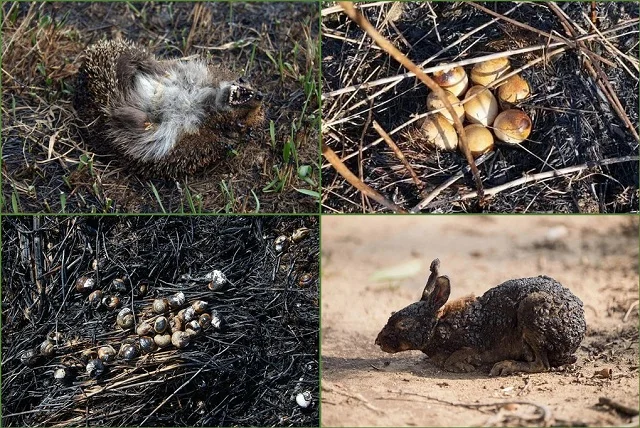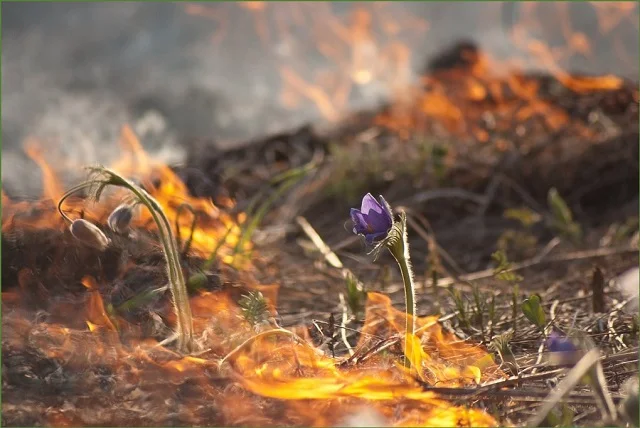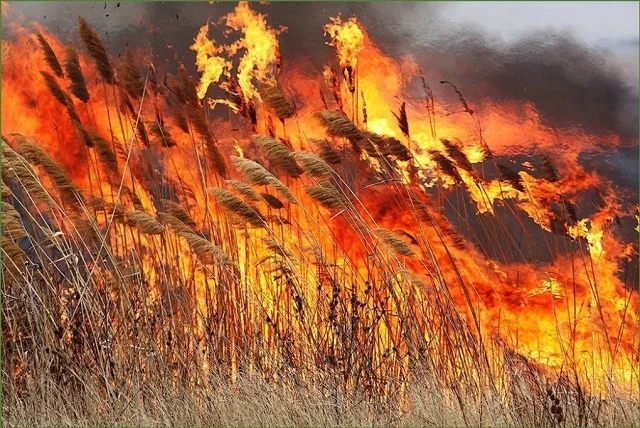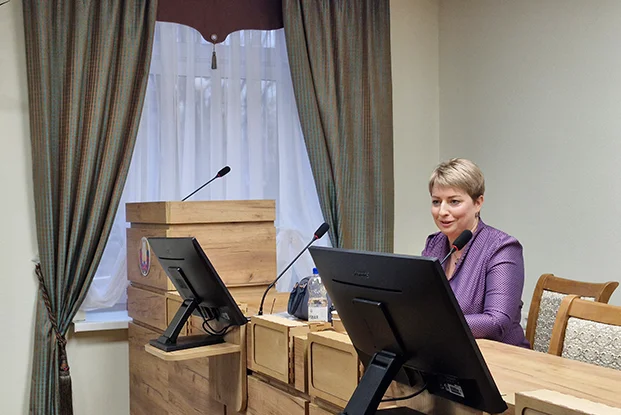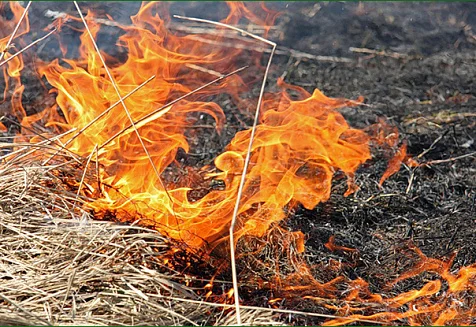
Statistics show that the vast majority of fires in ecosystems occur due to human fault and only 5–10% are due to meteorological conditions.
The main argument of those who support burning last year’s vegetation is to enrich it with ash, as a result of which grass appears faster and grows better in burnt areas.
Experts claim that the ash left after burning grass does not improve the quality of the soil in any way, since nitrogen compounds are lost (the main part of the bound nitrogen stored in vegetation is released into the atmosphere, becoming inaccessible to the vast majority of plants). The mineral elements contained in the ash become soluble and easily leave with surface and ground water. Only a small part of them is absorbed by plants.
After a grass fire, only grasses that reproduce by rhizomes, such as couch grass, germinate again. Honey flowers, cultivated grasses that are readily eaten by domestic animals as part of hay, reproduce by seeds, and the seeds burn when the grass is burned. EVERYWHERE where there have been fires, there will no longer be the same variety of grasses, weeds will take over the vacated territory.
When grass is set on fire, all the beneficial microflora of the soil is destroyed, including that which helps plants resist diseases.
Many invertebrates, insects, frogs, lizards, small mammals and birds sitting on eggs die in the fire of fires.
In addition, the combustion process is accompanied by the release of carbon dioxide into the atmosphere. The remains of fertilizers and pesticides burn in the fire, forming volatile toxic organic and inorganic compounds. When grass is burned along highways, the air is polluted with heavy metals.
The Ministry of Natural Resources draws attention to the fact that, according to:
- for illegal burning of dry vegetation, standing grass, as well as stubble and crop residues in fields, or failure to take measures to eliminate fires, the guilty persons shall be subject to administrative liability in the form of a fine in the amount of ten to thirty basic units (Article 16.40);
- for making fires in prohibited places, with the exception of violations of fire safety requirements, liability for which is provided for by other articles of the Special Part of the said Code, shall entail the imposition of a fine in the amount of up to twelve basic units (Article 16.41);
- Illegal burning of dry vegetation, standing grass (except lawns, flower beds, forest litter, live ground cover), as well as stubble and crop residues, is a fact of causing harm to the environment and provides for civil liability. The amount of compensation for damage caused to the environment is determined by the rates established by paragraph 6 of Appendix 8 to the said resolution.
When carrying out control activities, the territorial bodies of the Ministry of Natural Resources pay special attention to issues of stabilizing the situation with regard to fire safety in natural ecosystems, preventing the burning of dry vegetation in the republic.
Thus, in 2023, territorial bodies of the environmental protection agency drew up administrative offense reports against:
- 39 persons under Article 16.21 of the Code of Administrative Offenses for violating fire safety requirements in forests or peatlands;
- 89 persons under Article 16.40 of the Code of Administrative Offenses for illegal burning of dry vegetation, standing grass, and crop residues;
- 40 persons under Article 16.41 of the Code of Administrative Offenses for making fires in prohibited places;
- 62 persons under Article 16.44 of the Code of Administrative Offenses for violating waste management legislation in terms of burning waste in violation of the law.
- Based on the results of the consideration of administrative cases, taking into account the release of the guilty persons from administrative liability with a warning, the total amount of fines imposed was 7,215 rubles.
- In addition, 64 cases of damage to the environment were identified as a result of illegal burning of dry vegetation, standing grass, stubble and crop residues. In order to compensate for the identified damage, 55 claims were filed for a total of 33,649.69 rubles.
Work in this area is also being carried out this year.




